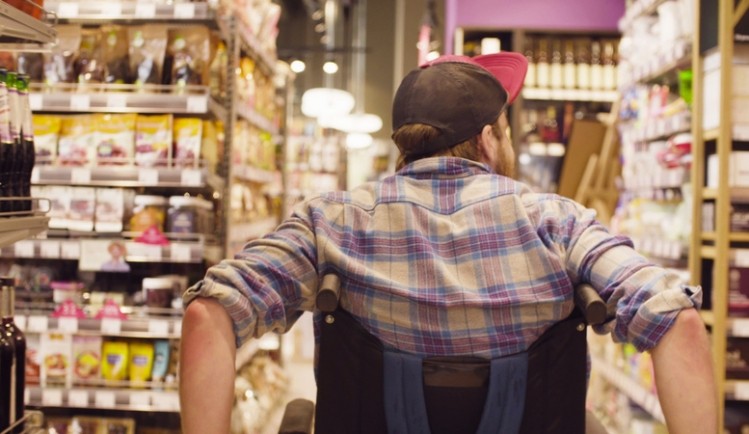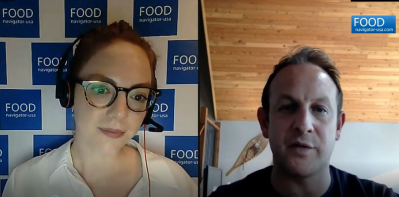Private label growth falls behind branded food for first time in a decade – driving need for new strategies

“When you look at what the behavior across food categories have been in the marketplace, consumers had restaurant restrictions, you had office closings, you had school closings. So, inherently, there were more meals at home, which drove for a huge growth across all food categories consistently,” Kara Sheesley, VP of retail engagement and US industry relations at NielsenIQ, said during a recent webinar hosted by ingredient solutions provider Kerry Taste & Nutrition.
But, she added, that growth did not simply accelerate existing trends from before the pandemic, which favored private label growth, but rather fueled growth of branded products much more quickly than private label – both during the panic-buying phase of the pandemic and in more recent months.
During the first six months of the pandemic, growth of branded products climbed 18.6% compared to private label which increased only 15.9% -- representing a 2.7% spread between the two. This difference continued to expand in the subsequent six months, even as sales for both slowed so that private label grew only 7.7% compared to branded products’ 11.1% growth, according to Nielsen.
This is a reversal of the two compared to the six months before the pandemic when private label was growing 4% and branded products only 2.2%.
While this does not reflect well for private label in edibles overall, it isn’t all bad news.
“There’s a couple of categories that are small and unique categories, like meat alternatives and nutrition replacement beverages – super small categories – that actually had private label growth in share in addition to dollars,” Sheesley said.
“The other dynamic that you see playing out in terms of consumer choices is that consumers were shifting their behavior in their categories to more unique treats. Restaurants are closed, and so they’re actually leaning into getting something that’s more interesting. So, you saw a shift from sandwich breads to buns … or for coffee, expanding into creamers and specialty teas, capturing that coffee shop experience at home,” she noted.
“Those are some of the categories that are less developed among private label products, which creates an interesting opportunity when you think about tapping into the innovation and giving categories as private label assortments expand,” she added.
According to the Private Label Manufacturers Association 2021 yearbook, store brands' market share remained constant between 2019 and 2020, with a 23.4% volume share and a 19.5% value share across US. supermarkets, mass, club, and dollar channels, as well as drug chains.
Give private label more prominence online
One strategy to drive more private label sales is to more prominently feature these products across digital shopping opportunities – a place where Sheesley says many private label products are “significantly underdeveloped.”
She explains that private label currently accounts for only 4% of online sales, mainly due to a lack of development in the point and click platform online.
“As retailers have started to modify their approach to online shopping, they’re recognizing that because they control the eye space, they actually can drive the consideration of their won and private label brands,” which has helped online sales of private label quadruple in the past two years through retailer platforms, Sheesley said.
Consistently hit table stakes
Retailers can also drive private label growth by optimizing offerings to grow and maintain “practical traditionalists,” which is a group of private label consumers that Kerry describes as seeking dependable, price-sensitive, simple products that either are necessary or have few or no bells and whistles, says Sarah Miller, strategic market research manager at Kerry Taste & Nutrition.
This group also prizes convenience, including making fewer shopping trips, which translates to more mainstream or commodity categories and products they know and trust.
With this in mind, Miller explained one way to appeal to these private label shoppers is by ensuring table stakes are met, including nutritional profiles that reduce ‘negatives,’ such as sugar and cholesterol.
Innovate to appeal to adventure seekers
Practical traditionalists only represent a portion of private label shoppers at one end of the spectrum. At the other end are adventure seekers who are interested in “experimenting with newness” and believe “you get what you pay for,” Miller said.
She explained that this group is more likely to purchase items in emerging categories, like plant-based proteins and functional beverages which are fast-growing – albeit smaller – areas for private label.
To appeal to these shoppers, she advises innovating around key market drivers, personalization, sustainability, and functionality. Through this lens, Kerry sees the most potential for private label in coffee and tea, refreshing beverages and alcohol, nutritional and functional beverages, plant-based and to a lesser extent sauces, condiments & dressings and dairy. Opportunities farther out on the horizon include meals and sides, baked goods, meat and snacks, Miller noted.
Ultimately, Miller said, to balance both ends of the spectrum of private label shoppers and drive sales, retailers must diversity their brand portfolio with products that align with consumer values and represent the retailer’s personality.























